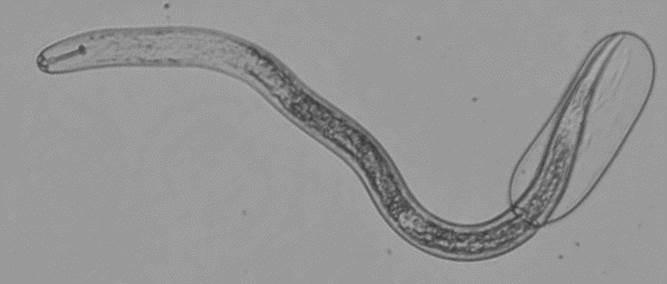Nematodes, an abundant group of roundworms that exist in nearly every habitat, have long been used as model organisms for studying the function of neurons – the basic unit of animal nervous systems. For years, it was assumed that neuron anatomy was remarkably similar across this large and diverse group. A recent study by University of Illinois researchers turns that assumption on its head.
“It was a comparative study looking at all of these different species of nematodes, including some parasites, and seeing that there are some substantial differences in the number of neurons in the ventral cord,” says U of I nematologist Nathan Schroeder.
According to Schroeder, discovering this degree of variation across the group suggests that neuron number and anatomy may have changed numerous times during nematode evolution. This is significant because the evolution of nervous systems is notoriously difficult to study in complex higher animals. Being able to study the relatively simple nervous system in nematodes can shed light on some basic research questions in nervous system evolution.
“This group of animals has the simplicity that makes it easy to work with in the lab, but there are these differences across species. So, we can target that and figure out how nervous systems are evolving.”
On a more practical level, the results of this study may lead to development of new nematicides – pesticides that target plant-parasitic nematodes.
“We know from some of the old nematicides that the nervous system is a very effective target. Unfortunately, some of those nematicides were very broad spectrum and would target anything with a nervous system, including us,” Schroeder noted.
The study showed that soybean cyst nematodes, a major crop pest in Illinois, may have unique neurons that could be targeted by new nematicides to avoid harming beneficial soil organisms. More research will be required to determine whether such a product could be developed, but the study indicates that the potential may exist.
The authors are now focusing their attention on soybean cyst nematodes to identify unique neurons and to learn more about how those neurons affect the movement of the microscopic roundworms in the soil and in soybean plants.
Original paper can be found here: http://journal.frontiersin.org/article/10.3389/fnana.2015.00162/abstract


